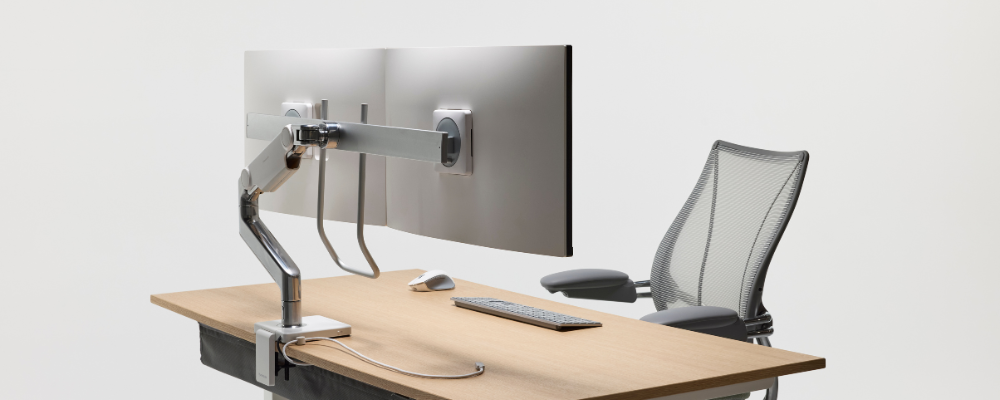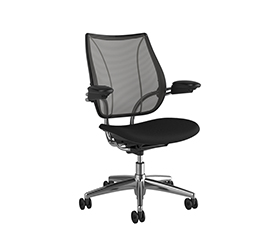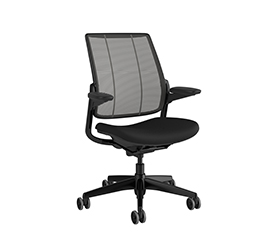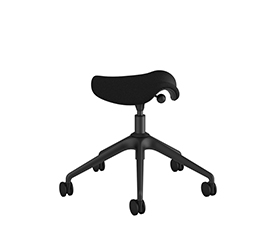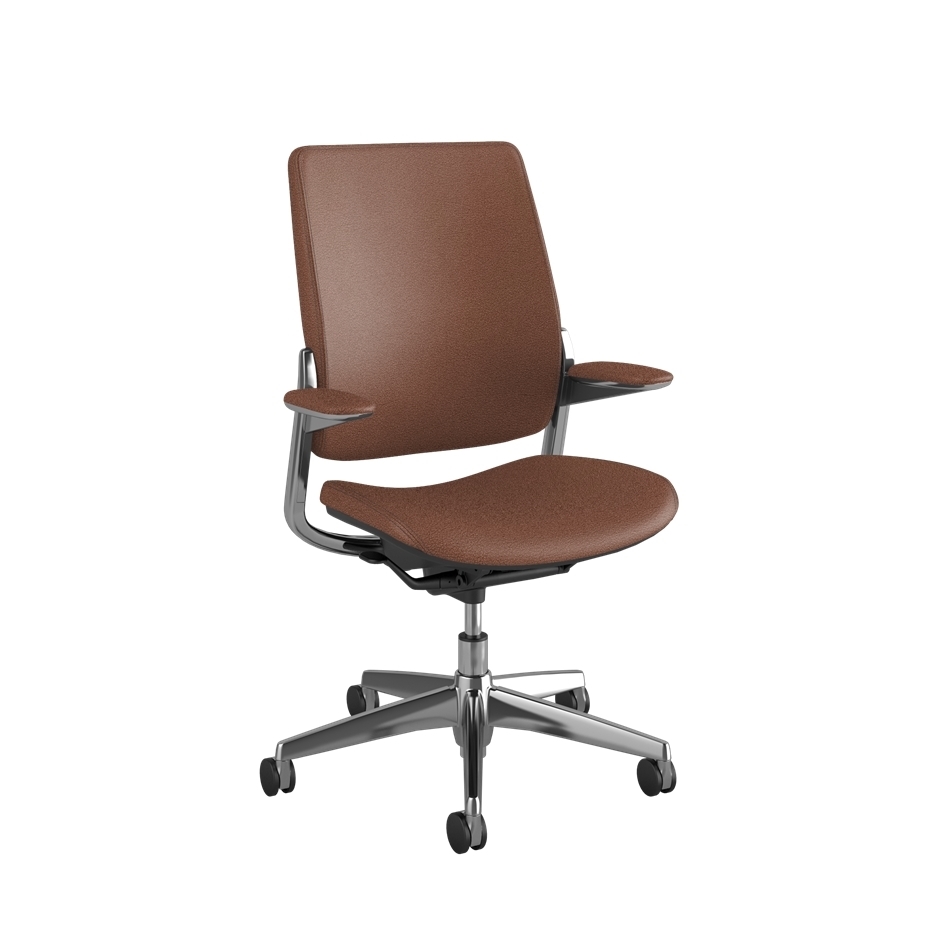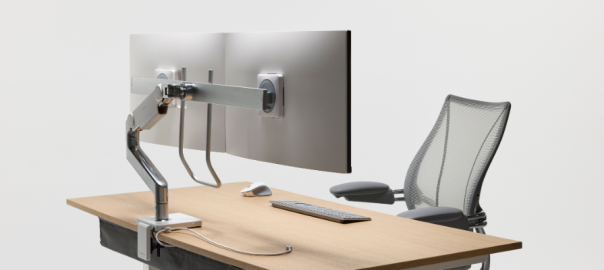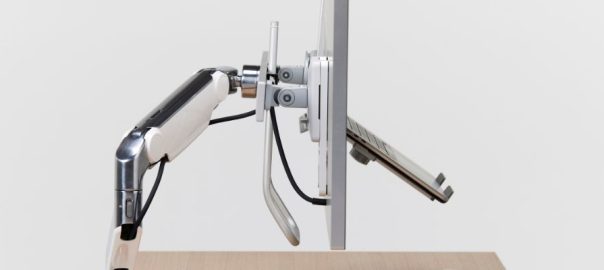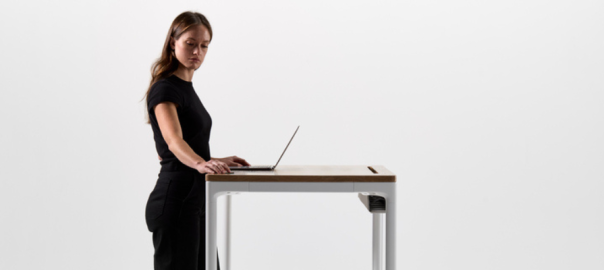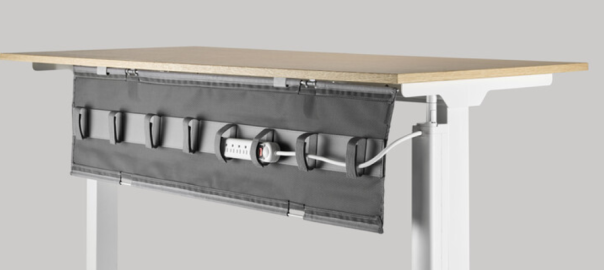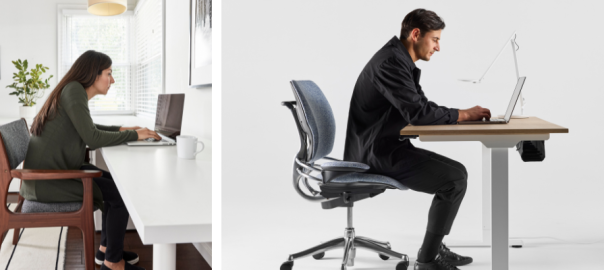Setting up an ergonomic workstation is essential to maintain good health and productivity. Many people overlook table ergonomics and desk ergonomics, leading to discomfort, poor posture, and long-term health issues including lower back pain, eye problems, and repetitive stress injuries.
Without an ergonomically correct workstation, you may experience the effect of poor posture that makes it harder to focus and work efficiently.
Fortunately, addressing these issues with the right equipment can make a big difference. In this guide, we will cover the workstation ergonomics essentials that you need to create a comfortable and healthy work environment.
Essential Items that Create a Fully Ergonomic Workstation
Creating a fully ergonomic workstation is crucial for maintaining proper desk posture and reducing the risk of discomfort or long-term injury. A well-designed workspace that incorporates the right ergonomic furniture and accessories helps align your body properly and supports your overall health. Below are the desk ergonomics essentials that make up a comfortable and efficient minimal desk setup.
Ergonomic Chair
The best office ergonomic chair is designed to provide optimal support for your body, encouraging good posture and helping prevent discomfort or injury over long hours of sitting.
- Promotes proper desk posture: The chair supports your spine’s natural curve, which helps prevent slouching and encourages sitting upright.
- Reduces back pain: The chair’s lumbar support (support for your lower back) ensures proper alignment, reducing strain on the spine and preventing lower back pain.
- Adjustability: Features such as adjustable armrests, seat height, along with backrests backrests allow you to fine-tune the chair to your body’s needs, making it more comfortable for long hours of use.
- Improves circulation: An ergonomic chair helps keep your legs in a neutral position, allowing blood flow to circulate freely and reducing the chances of numbness or swelling in your legs.
Ergonomic Desk
An ergonomic desk is designed to help you maintain a healthy posture and organise your workspace efficiently, allowing you to work comfortably for extended periods.
- Correct height for your body: A desk at the right height ensures your arms rest comfortably at a 90-degree angle, which helps reduce shoulder and wrist strain.
- Proper screen alignment: The desk height allows your monitor to be positioned at eye level, preventing neck strain and the tendency to hunch forward or down at your screen.
- More legroom: A spacious desk helps ensure that your legs have enough room to move freely, reducing the chances of discomfort or poor circulation from cramped leg space.
- Encourages movement: Some ergonomic desks are height-adjustable, allowing you to alternate between sitting and standing, which is better for circulation and overall comfort.
Ergonomic Keyboard
An ergonomic keyboard is specially designed to reduce strain on your hands, wrists, and fingers, promoting a more natural typing posture.
- Reduces wrist strain: It keeps your wrists in a neutral position, preventing them from bending upwards or downwards, which can cause discomfort and strain over time.
- Prevents repetitive strain injuries: A more relaxed, natural typing position helps reduce the risk of conditions like carpal tunnel syndrome or tendinitis.
- Encourages better typing posture: An ergonomic keyboard stand is often split or curved, encouraging you to keep your wrists and hands in alignment with your forearms, supporting proper desk posture.
Ergonomic Mouse
An ergonomic mouse is designed to fit the natural shape of your hand, reducing strain on the wrist and forearm during use.
- Reduces wrist and arm strain: The ergonomic design encourages a natural hand position, preventing wrist bending that can lead to discomfort or injury.
- Promotes comfort: It supports your hand’s natural position, making it easier to navigate the mouse and reducing the risk of overuse injuries.
- Decreases the risk of ergonomic hazards: An ergonomic mouse helps minimise strain on your muscles, reducing the likelihood of developing repetitive strain injuries like carpal tunnel syndrome or tendinitis.
Ergonomic Light
Proper lighting in your workspace is essential to preventing eye strain and creating a comfortable working environment.
- Reduces eye strain: Good ergonomic lighting prevents glare on your screen, which can cause headaches and eye fatigue during long work sessions.
- Prevents headaches: Proper lighting reduces strain on your eyes, helping you maintain focus without discomfort.
- Adjustable brightness: Ergonomic lighting often allows you to adjust the brightness and angle, ensuring that the light is optimal for both your eyes and the screen.
Monitor Arm/Mount
An Ergonomic monitor arm or mount allows you to position your screen at the ideal height and angle, reducing strain on your neck and eyes.
- Promotes proper alignment: Adjusting the height of your monitor to eye level helps keep your neck in a neutral position, reducing the risk of neck and back strain.
- Reduces glare: Monitor arms let you adjust the angle of your screen to avoid direct light sources, reducing eye strain from glare.
- Improves workspace organisation: By lifting your monitor off the desk, you create more space for other items, keeping your workspace tidy and reducing clutter.
Docking Station
A docking station connects multiple devices, such as a laptop, monitor, keyboard, and mouse, to your computer through a single point.
- Minimises clutter: It helps reduce cable clutter by connecting all your devices to a hub, allowing you to keep your workspace organised and streamlined.
- Supports multiple devices: A docking station lets you connect a laptop to an external monitor, keyboard, and mouse, giving you the feel of a desktop workstation while working on a laptop.
- Improves productivity: By connecting multiple devices through one central point, a docking station makes it easier to work efficiently without switching between cables or devices.
By incorporating these workstation ergonomics essentials into your workspace, you will create a more ergonomically correct workstation that supports your health and productivity. These items help you maintain proper desk posture, prevent discomfort, and reduce the effect of poor posture, contributing to a more comfortable and efficient workday.
Additional Accessories to Enhance Ergonomics
In addition to the essential items that form the backbone of an ergonomic workstation, there are several additional accessories that can further improve workstation ergonomics and comfort. These accessories address specific areas like leg position, posture, and workspace organisation, helping to enhance your overall productivity and well-being.
Footrest
A footrest is an accessory that helps improve leg position, comfort, and circulation, especially for individuals who may not reach the floor comfortably while sitting.
- Supports proper leg alignment: A footrest allows you to keep your feet properly on the ground and your knees at a 90-degree angle, which promotes proper desk posture.
- Improves circulation: Elevating your feet slightly helps reduce pressure on your legs, encouraging better blood flow and preventing issues like leg numbness or swelling that can arise from sitting too long.
- Provides comfort for shorter users: For individuals who are shorter and may not reach the floor with their feet, a footrest helps maintain comfort and alignment by supporting the feet and legs.
- Reduces pressure on the lower back: By improving your posture, a footrest reduces the strain on your lower back, that helps prevent discomfort or pain from prolonged sitting.
Anti-Fatigue Mats
For those who use a standing desk, an anti-fatigue mat is a crucial accessory designed to reduce the strain caused by standing for long periods.
- Reduces leg and foot strain: The mat cushions your feet, making it more comfortable to stand for extended periods and reducing the stress placed on your legs and feet.
- Improves comfort: It encourages slight movement, which helps reduce stiffness and muscle fatigue that can occur when standing for too long.
- Promotes better posture: An anti-fatigue mat can help align your body by encouraging a more natural stance and preventing the fatigue that comes with poor posture during standing.
- Reduces pressure on joints: The cushioning effect of the mat helps absorb pressure on your feet and joints, making standing less tiring.
Cable Management
Good cable management involves organising and securing cables to prevent them from creating a messy workspace, which can lead to distractions, safety hazards, and poor posture.
- Prevents tripping hazards: Keeping cables neatly tucked away or clipped helps prevent accidental trips or falls, reducing the risk of injury.
- Maintains a tidy workspace: A clutter-free desk not only looks more organised but also helps you focus better by minimising distractions caused by tangled wires.
- Improves airflow: Proper cable management ensures that cables don’t obstruct airflow around your devices, which can improve their efficiency and lifespan.
- Supports ergonomics: By organising cables out of your immediate workspace, you prevent unnecessary reaching or twisting, that can result in strain on your neck, shoulders, and arms.
These additional workstation ergonomic accessories are simple yet effective tools that contribute to an ergonomically correct workstation. By including a footrest, anti-fatigue mat, and cable management system in your workspace, you can significantly improve comfort, safety, and posture.
Conclusion
Setting up a fully ergonomic workstation is not just about comfort, it’s about creating a space that helps protect your health while improving your productivity. Whether you work from home or in an office, the workstation ergonomics principles you follow directly impact your posture, comfort, and long-term well-being.
By investing in the right equipment and making thoughtful adjustments, you are not only improving the way you work but also making a commitment to your health. Moreover, understanding the benefits of ergonomics, including reduced stress on your muscles, joints, and eyes, can help you stay motivated to maintain proper posture and workstation setup.
However, even with the best ergonomic tools, it’s essential to remember that a workstation alone won’t solve all posture-related problems. Practicing how to correct posture throughout the day, such as adjusting your sitting position regularly and taking short breaks, will ensure that your body remains in a healthy position.

